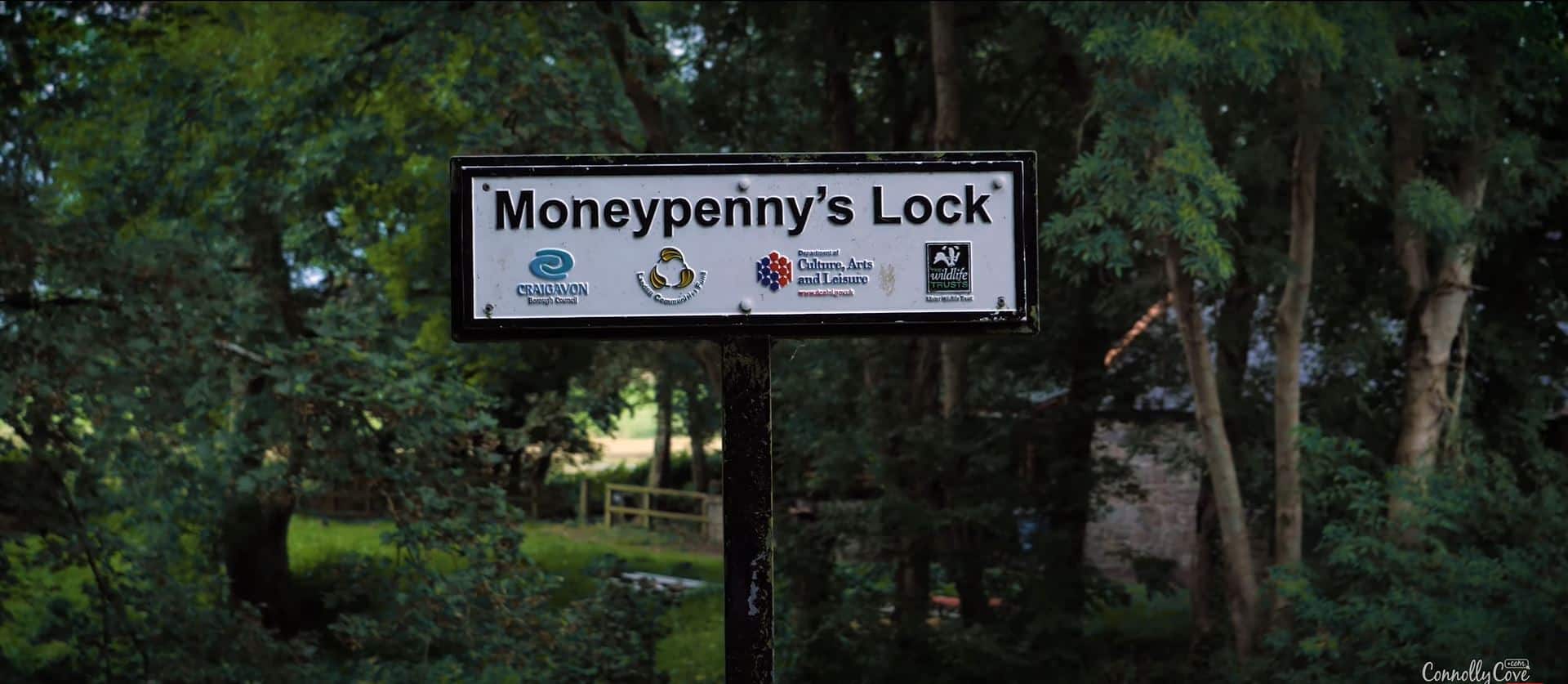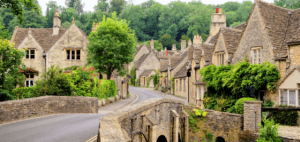Moneypenny’s Lock | Portadown | Newry Canal, Northern Ireland

Updated On: April 15, 2024 by Ahmed Samir
Moneypenny’s Lock- a hidden treasure along the Newry Canal lies in the heart of Northern Ireland, where the lush green landscape meets the serenity of still waters. This unassuming yet historically significant site offers a unique portal to the past, taking visitors on a journey through time, nature, and the region’s rich industrial heritage. As we delve into the story of Moneypenny’s Lock, we will uncover its history, enduring importance, and the myriad attractions that make it a cherished destination in Northern Ireland.
Portadown: A Storied Town in County Armagh’s Heart
Portadown is a historic town in the picturesque County Armagh, Northern Ireland. With its roots dating back to the early 17th century, Portadown has grown into a vibrant and thriving community over the centuries. Situated on the banks of the River Bann, the town’s picturesque setting is complemented by its rich historical heritage.
Portadown’s town centre boasts a charming blend of traditional and modern elements, featuring historic architecture alongside contemporary amenities. This town is known for its welcoming atmosphere, diverse cultural scene, and wide range of shops, restaurants, and pubs catering to residents and visitors. Portadown’s central location also makes it a hub for transportation, connecting various parts of Northern Ireland and providing convenient access to nearby attractions, making it an ideal base for exploring the region’s historical, cultural, and natural wonders.
Origins and Significance of the Newry Canal
Before delving into the specifics of Moneypenny’s Lock, it’s essential to understand the historical context in which it exists. The Newry Canal, which stretches for 18 miles (29 kilometres), was one of the first canals built in Ireland. It was constructed during the late 18th century and early 19th century, playing a pivotal role in the industrial revolution that swept through the region.
The canal was the brainchild of Richard Cassels, a prominent architect, and Thomas Colvill, a local merchant. Its primary purpose was to connect the thriving port town of Newry to the city of Armagh, providing an efficient means of transporting goods and raw materials between these two critical locations. Construction began in 1731, making it one of the earliest artificial waterways in the British Isles.
Moneypenny’s Lock: A Jewel on the Newry Canal
Moneypenny’s Lock, also known as Lock 9, is a historical feature along the Newry Canal that has retained its charm and significance over the centuries. The Lock is located approximately halfway between Newry and Portadown, serving as a crucial part of the canal’s infrastructure. It was named after a local landowner and played a vital role in facilitating the movement of boats along the waterway.
The construction of Moneypenny’s Lock marked a significant engineering achievement of its time. The lock system was designed to regulate the water levels and let boats traverse the varying elevations along the canal. The locks, including Moneypenny’s, were operated manually by lock-keepers who would open and close the gates to allow boats to pass through.
Today, Moneypenny’s Lock stands as a testament to the craftsmanship and engineering ingenuity of the past. Its well-preserved structure and picturesque surroundings make it a must-visit destination for history enthusiasts, photographers, and those seeking a peaceful escape in the heart of Northern Ireland.
Exploring Moneypenny’s Lock
Visitors to Moneypenny’s Lock are in for a treat, as there are numerous activities and attractions to explore in the area:
- Scenic Walks: The Newry Canal Towpath offers a scenic walking trail that meanders along the waterway, passing Moneypenny’s Lock. This tranquil path is ideal for strolls, providing opportunities to soak in the natural beauty of the canal and its surroundings. The towpath is also popular among cyclists, offering a gentle and picturesque route for bike rides.
- Birdwatching: The Newry Canal and its adjacent wetlands are home to various bird species, making it a paradise for birdwatchers. Keen observers may spot swans, herons, kingfishers, and even elusive otters along the water’s edge. The peaceful ambience of Moneypenny’s Lock enhances the birdwatching experience.
- Historical Significance: History buffs will appreciate the well-preserved features of Moneypenny’s Lock. The lock-keeper’s cottage, the lock gates, and the quaint stone bridge all offer insights into the canal’s past. Interpretive signs provide information about the canal’s history and operation, giving visitors a deeper understanding of its importance.
- Picnic Spots: Moneypenny’s Lock is an excellent place for a picnic. Bring some sandwiches and enjoy your meal by the water’s edge, enjoying the serene atmosphere. It’s a perfect spot for families and friends to gather and relax.
- Photography: The picturesque setting of Moneypenny’s Lock presents numerous opportunities for photographers. You will find endless inspiration if you’re interested in capturing the lock’s architectural details, the surrounding flora and fauna, or the play of light on the water.
- Fishing: Fishing enthusiasts will find the Newry Canal a great place to cast a line. The canal is home to various fish species, including pike, perch, and roach. Be sure to obtain the necessary permits and adhere to local fishing regulations.
Preservation Efforts and Community Involvement
Moneypenny’s Lock owes its excellent state of preservation to the efforts of local communities and heritage organizations. The Newry and Portadown Branch of the Inland Waterways Association of Ireland has been instrumental in maintaining and promoting the Newry Canal as a heritage asset. Volunteers and enthusiasts have worked tirelessly to ensure that the Lock and its surroundings remain accessible to the public.
Moreover, Moneypenny’s Lock often serves as a venue for community events, including guided tours, historical reenactments, and educational programs. These initiatives help raise awareness of the Lock’s historical significance and foster a sense of pride among residents.
Attractions Near Moneypenny’s Lock
- The Palace Stables Heritage Centre: Situated in Armagh, the Palace Stables Heritage Centre offers a fascinating glimpse into the city’s history. Housed in the beautifully restored 18th-century stables, the centre features interactive exhibits, historical artefacts, and guided tours that showcase Armagh’s rich heritage.
- Armagh Planetarium and Observatory: Just a short drive from Moneypenny’s Lock, the Armagh Planetarium and Observatory is a must-visit for space enthusiasts and families. It features captivating displays on astronomy, a digital theatre for astronomical shows, and telescopes for stargazing.
- Armagh Public Library: Established in 1771, the Armagh Public Library is one of the oldest libraries in Ireland. It houses an extensive collection of rare books, manuscripts, and historical documents, making it a valuable resource for researchers and a fascinating place to explore for history buffs.
- The Argory: Located near Moy, The Argory is a splendid National Trust property set amidst lush gardens and woodlands. This Neo-Classical mansion offers guided tours, showcasing its elegant interiors and picturesque grounds. It’s an excellent place for a stroll and a glimpse into the lifestyle of the landed gentry.
- Navan Centre and Fort: Just a short drive from Moneypenny’s Lock, the Navan Centre and Fort provides an immersive experience of the region’s ancient history. It’s known for its archaeological discoveries, interactive exhibits, and a reconstructed Iron Age dwelling, giving visitors a taste of life in prehistoric Ireland.
- Gosford Forest Park: Situated near Markethill, Gosford Forest Park is a sprawling natural oasis covering over 240 hectares. It offers picturesque walking and cycling trails, a lake for fishing, and a playground for families. The park’s serene woodlands and diverse wildlife make it a tranquil retreat.
- Lough Neagh: As the largest lake in the British Isles, Lough Neagh is a significant natural attraction in Northern Ireland. It’s perfect for boating, fishing, and birdwatching. Several lakeside towns and villages around Lough Neagh offer dining and recreational opportunities.
- Armagh Cider Company: Visiting the Armagh Cider Company is a treat if you appreciate local produce. Here, you can learn about the cider-making process, sample delicious local ciders, and even take a guided tour of the orchards.
These attractions near Moneypenny’s Lock provide diverse experiences, from exploring history and culture to enjoying the natural beauty of Northern Ireland’s countryside. Visitors to the area are sure to find something that piques their interest and enriches their visit.
Conclusion
Moneypenny’s Lock on the Newry Canal in Northern Ireland is a remarkable testament to the region’s industrial heritage and natural beauty. Its historical significance, well-preserved features, and serene surroundings make it a must-visit destination for anyone exploring Northern Ireland. Whether you are interested in history, nature, photography, or simply seeking a peaceful escape, Moneypenny’s Lock offers something for everyone. As you walk along the Newry Canal Towpath, take a moment to appreciate the rich history and the tranquil beauty of this hidden gem that has stood the test of time.
FAQs
Can I visit Moneypenny’s Lock and the nearby attractions year-round?
Yes, you can visit Moneypenny’s Lock and the nearby attractions throughout the year. However, remember that weather conditions may vary, so be prepared accordingly, especially if you plan to engage in outdoor activities.
Are there any nearby dining options or places to have a meal or a snack?
Several towns and villages near Moneypenny’s Lock, such as Portadown and Armagh, offer various dining options, including restaurants, cafes, and pubs. You can enjoy local cuisine and refreshments after exploring the area.






